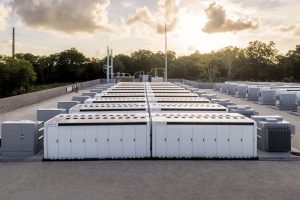- 💡 Tesla and the United States Government have objected to Mexico’s proposed electric vehicle charging station rules.
- 🚗 Mexico’s Energy Regulatory Commission (CRE) aims to require electric vehicle charging stations to have multiple connectors, differing from the strategy in the United States.
- 💳 Tesla Mexico argues that mandating different types of chargers increases technical complexity, entry barriers, costs, and hampers regional integration, affecting the consumer experience negatively.
- 🌎 Tesla Vice President Rohan Patel highlights Tesla’s substantial investment in a cross-country charging network in Mexico, emphasizing the importance of the EV driver experience.
- 🔌 Patel argues against having 5 different connector standards in Mexico, stating it would not accelerate deployment or provide a good customer experience, and some connector types may inhibit cross-border travel with the US.
- 🚀 Tesla’s official website indicates over 15,000 Supercharger stalls open to non-Tesla vehicles adhering to the North American Charging Standard, with ongoing expansion efforts to increase NACS-compatible chargers.
In the realm of electric vehicles (EVs), charging infrastructure plays a pivotal role in shaping adoption rates and consumer experiences. Recently, Tesla, alongside the United States Government, voiced objections to Mexico’s proposed electric vehicle charging station rules. This contentious issue brings to light various complexities surrounding EV infrastructure standards and their implications for industry players and consumers alike.
Understanding Mexico’s Proposed EV Charging Rules
Mexico’s Energy Regulatory Commission (CRE) is considering a mandate that electric vehicle charging stations must accommodate multiple connectors. This diverges significantly from the approach adopted in the United States, where a unified standard, Tesla’s North American Charging Standard (NACS), predominates.
Tesla Mexico’s Concerns
Tesla Mexico, in response to the proposed rules, raised significant concerns regarding the feasibility and impact of mandating multiple connector types. The company argues that such a requirement would introduce technical complexities, increase entry barriers, inflate costs, and impede regional integration efforts. Moreover, Tesla emphasizes the adverse effects on the consumer experience, foreseeing challenges in accessibility and interoperability.
Insights from Tesla’s Vice President
Rohan Patel, Tesla’s Vice President of Public Policy and Business Development, provides further insights into Tesla’s stance on Mexico’s EV charging rules. Patel underscores Tesla’s substantial investment in building a comprehensive cross-country charging network in Mexico, emphasizing the company’s commitment to enhancing the EV driver experience. However, he cautions against the adoption of five different connector standards in Mexico, citing potential setbacks in deployment speed and customer satisfaction.
Balancing Standards and Accessibility
The debate surrounding EV charging standards underscores the delicate balance between standardization and accessibility. While standardized charging protocols facilitate interoperability and streamline infrastructure deployment, overly stringent mandates risk stifling innovation and imposing undue burdens on industry players. Striking a balance that promotes both technological advancement and consumer convenience is paramount.
Tesla’s Commitment to Expansion
Despite the regulatory challenges, Tesla remains steadfast in its commitment to expanding EV charging infrastructure. The company’s decision to open over 15,000 Supercharger stalls to non-Tesla vehicles adhering to the North American Charging Standard reflects a strategic approach to fostering wider EV adoption and promoting interoperability across the industry.
Conclusion: Toward a Unified Charging Ecosystem
As the EV landscape continues to evolve, collaboration and dialogue among stakeholders are essential to forge a cohesive charging ecosystem that serves the needs of all consumers. While regulatory debates may persist, the ultimate goal remains clear: to establish a seamless, efficient, and accessible charging infrastructure that accelerates the transition to sustainable transportation.





